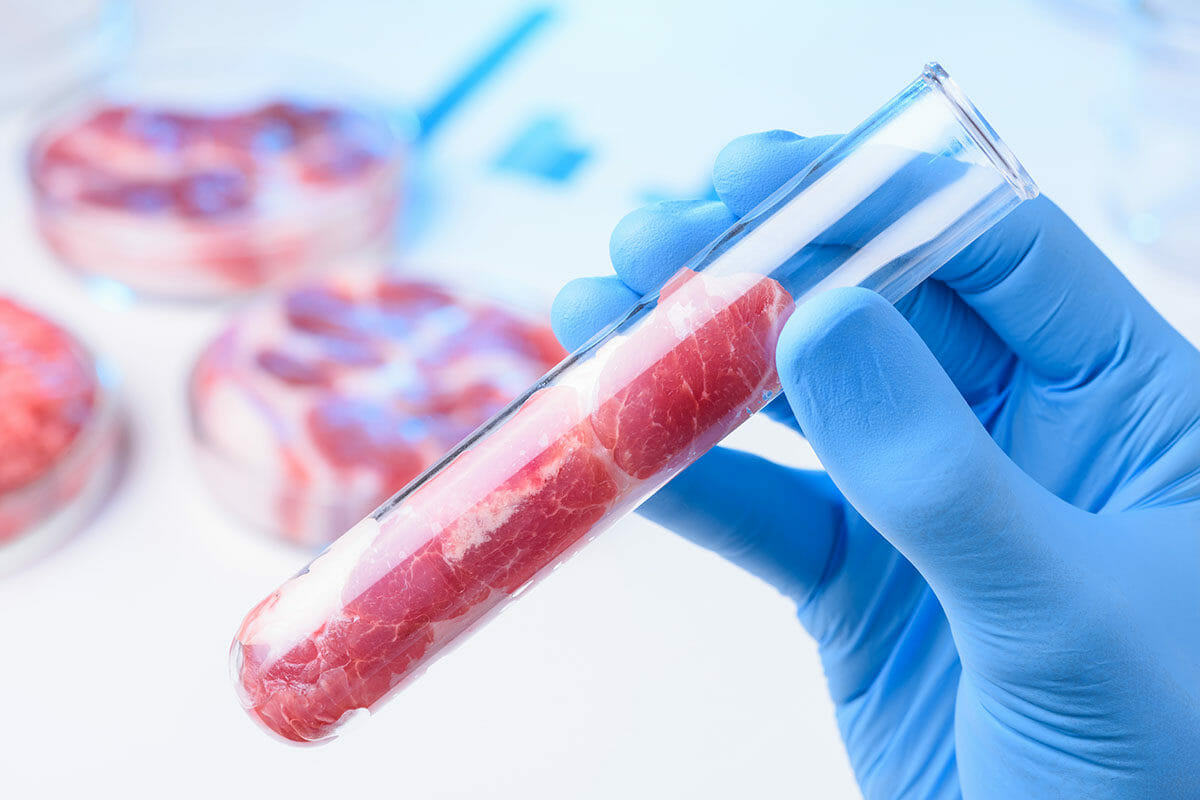Hii, This is Science Feed.
Would you like to eat meat grown in a lab???
Hmm........Is this even possible?
So, Lots of startups are developing ways to grow meats in labs among which leading companies are Mosa Meat, Memphis Meats, SuperMeat and Finless Foods. These companies take the muscle cells, do lots of processes to convert tiny cells into petri dish sized tissues. The biggest challenges to lab-grown meat are these are time-consuming, taste and looks, too expensive to grow and resources for its development.
How this synthetic meat is cultured in the lab?
The simple technique of "cell culturing" is done with cells obtained from the livestock. The cells are fed with the nutrient-rich serum which leads to the growth of cell into muscle tissues in a few days.
After the cells have grown, they more look like the strips of muscle fibres. The resulting tissue can be used in food cooking.

To this innovative idea, bigger MNCs have come to raise funds like in 2017, Memphis Meats was funded about $17 million. When the first burger made from lab-grown meat was presented in 2013, it cost about $300,00 and was not on the mark in terms of taste and quality. After years of R&D, its price dropped to $600 per quarter-pound. According to Mosa Meat, one tissue sample of a cow is able to yield about 80,000 quarter-pound of muscle tissues. The companies believe that its price will eventually drop with a rise in the quality of the product.
One of the best benefits of these lab-grown meats is that these are environmental-friendly. Also, Lab-grown meat uses a very low amount of water than the water used for livestock in farms.
On average, meat from livestock uses about 9000 litres of water while lab-grown meat only needs about 90-100 litres. Another positive impact of lab-grown meat may be the reduction of greenhouse gases up to 90% and about 95% of the land is required in comparison to domestic farms.

The problem of overgrazing is the major issue of commercial meat which is leading to deforestation.
Maybe this cultured meat solves the issue of food forever.
Thanks for Reading
Read More :
Researchers have got a technique to extract direct food source from Carbon Dioxide - Science Feed
Bored at Home ??? Best projects you can try out when bored - Science Feed
Pandemics Before Coronavirus That Shook The Whole World - Science Feed
Would you like to eat meat grown in a lab???
Hmm........Is this even possible?
So, Lots of startups are developing ways to grow meats in labs among which leading companies are Mosa Meat, Memphis Meats, SuperMeat and Finless Foods. These companies take the muscle cells, do lots of processes to convert tiny cells into petri dish sized tissues. The biggest challenges to lab-grown meat are these are time-consuming, taste and looks, too expensive to grow and resources for its development.
How this synthetic meat is cultured in the lab?
The simple technique of "cell culturing" is done with cells obtained from the livestock. The cells are fed with the nutrient-rich serum which leads to the growth of cell into muscle tissues in a few days.
After the cells have grown, they more look like the strips of muscle fibres. The resulting tissue can be used in food cooking.

To this innovative idea, bigger MNCs have come to raise funds like in 2017, Memphis Meats was funded about $17 million. When the first burger made from lab-grown meat was presented in 2013, it cost about $300,00 and was not on the mark in terms of taste and quality. After years of R&D, its price dropped to $600 per quarter-pound. According to Mosa Meat, one tissue sample of a cow is able to yield about 80,000 quarter-pound of muscle tissues. The companies believe that its price will eventually drop with a rise in the quality of the product.
One of the best benefits of these lab-grown meats is that these are environmental-friendly. Also, Lab-grown meat uses a very low amount of water than the water used for livestock in farms.
On average, meat from livestock uses about 9000 litres of water while lab-grown meat only needs about 90-100 litres. Another positive impact of lab-grown meat may be the reduction of greenhouse gases up to 90% and about 95% of the land is required in comparison to domestic farms.

The problem of overgrazing is the major issue of commercial meat which is leading to deforestation.
Maybe this cultured meat solves the issue of food forever.
Thanks for Reading
Read More :
Researchers have got a technique to extract direct food source from Carbon Dioxide - Science Feed
Bored at Home ??? Best projects you can try out when bored - Science Feed
Pandemics Before Coronavirus That Shook The Whole World - Science Feed

